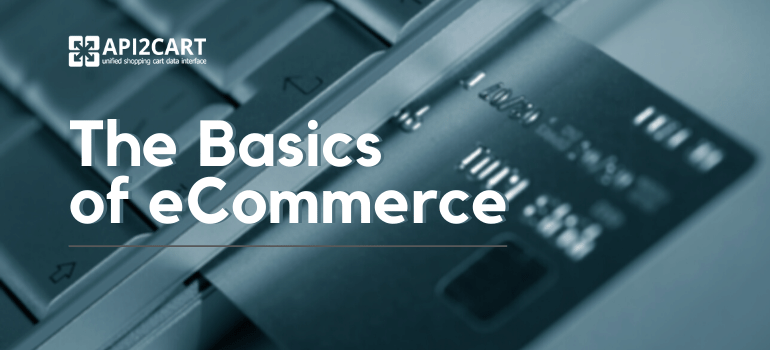
It seems like everybody heard about eCommerce, but what exactly this term means? eCommerce, short for “electronic commerce”, implies the transactions across the Internet. It covers a range of different types of business, from online shopping to Internet banking. Today, it is one of the most popular ways of buying and selling to businesses and consumers.
Types of eCommerce
Most eCommerce businesses fall into 4 major groups:
- Business to Business (B2B) - a type of eCommerce when products or services are marketed from one business to another. In B2B companies the value of sale is much higher than in B2C case.
- Business to Consumer (B2C) - businesses selling goods to end-customers, usually for personal use. In B2C model the sales cycle is shorter, as customers are encouraged to buy a product on the spot.
- Customer to Customer (C2C) - a business model where customers can sell to each other. Basically, they sell properties like a car, house, electronics etc.
- Customer to Business (C2B) - a type of eCommerce, in which the individual consumer sells a product or service to organizations.
These are the primary eCommerce models, but they aren’t the only one. Besides them, there are also forms of eCommerce that involve transactions with the government: G2B (Government to Business), G2G (Government to Government), G2C (Government to Citizen), C2G (Citizen to Government), etc.
eCommerce Automation
Running eCommerce business involves a flood of tasks, processes, and demands. When it comes a moment that operating manually is difficult, eCommerce software comes for help. It automates many processes and tasks related to products, orders, and customer management. eCommerce software do the following tasks:
1. Manage customers and orders.
Handling everything from customer’s order and product selection, to payment, checkout and delivery are often difficult to manage. Order management systems enable to manage orders, check order status, make quick changes if needed, organize shipping, and many other related processes.
2. Manage products and inventory.
Controlling product stock with items available and unavailable, ordered and sold ones is a pain when done manually on paper. Good inventory management software can fix it by optimizing inventory levels.
3. Simplify marketing.
One of the important tasks marketing should do is to reach more customers, win them back, recover lost revenues, etc. That all can be implemented with the help of email marketing automation software which allows to send relevant emails to customers and in its turn make marketing processes simpler and faster.
4. Automate shipping.
With eCommerce shipping management software it becomes easy to automate any shipping task, as well as manage shipping process in one easy-to-use platform.
The Future of eCommerce
It wasn’t too long ago that buying online was the exception rather than a rule. However, over the last years, eCommerce has changed the way people interact, search for products to buy, and conduct shopping.
According to the research, eCommerce is expected to continue growing. Global retail eCommerce sales are projected to reach $27 trillion by 2020. Along with that, new trends will appear, creating a more augmented or virtual reality experience for shoppers.
API Integration for eCommerce Software
For running eCommerce software integrations with shopping platforms and marketplaces are unavoidable. However, when it comes to developing separate API integration it is always time-consuming and expensive.
For taking the burden off of you, API2Cart provides a unified API for shopping platforms and marketplaces. The service allows to retrieve the required data from stores such as orders, customers, products, etc. What’s more, you will be able to integrate with more than 40+ shopping platforms and marketplaces such as Magento, Shopify, PrestaShop, Amazon and other.
Just schedule a call with our representative or try how API2Cart would work for your business.



